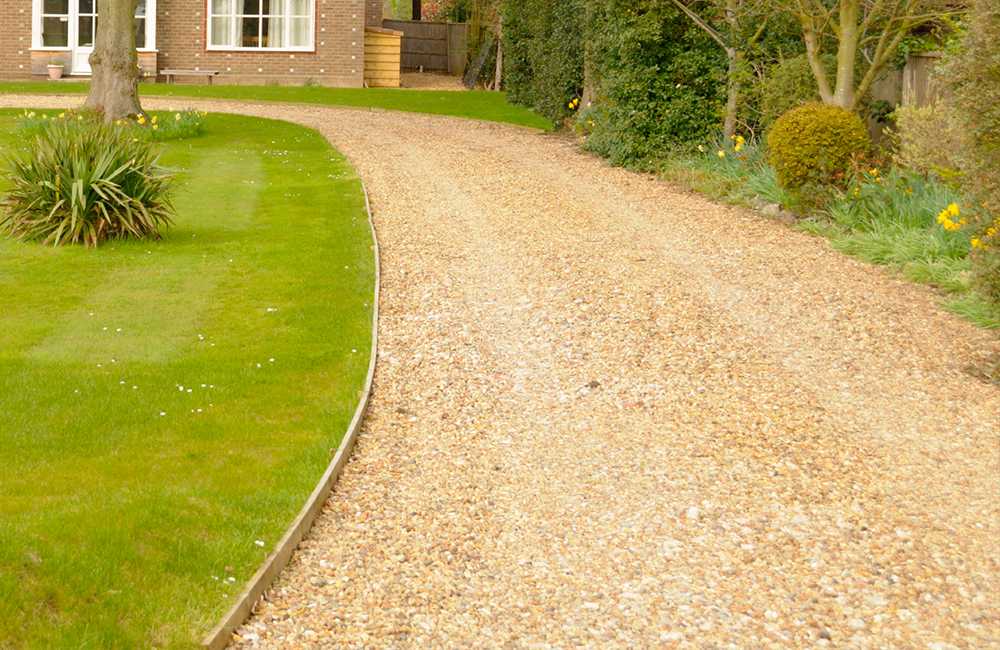With excellent drainage and a rustic aesthetic, gravel driveways can enhance curb appeal while meeting practical needs. This article explores the benefits, challenges, and installation process of gravel driveways, along with tips for ensuring durability and functionality.
Benefits of Gravel Driveways
Gravel driveways offer several advantages that make them a compelling option for many properties:
Cost-Effective: Gravel is significantly cheaper than asphalt or concrete, making it budget-friendly for large driveways.
Excellent Drainage: The permeable surface allows water to pass through, reducing runoff and preventing puddles.
Easy Installation: Compared to paved surfaces, gravel driveways require less time and specialized equipment to install.
Aesthetic Versatility: Available in various colors, sizes, and textures, gravel can complement any home’s style.
While gravel driveways are highly practical, proper planning and maintenance are key to maximizing their longevity.
Are Gravel Driveways Right for Your Property?
Gravel driveways are suitable for a wide range of properties, from rural homes to suburban lots. They work well for flat or gently sloped terrain and are ideal in areas with heavy rainfall due to their drainage properties. However, they may not be the best choice for high-traffic driveways or regions with frequent snow, as gravel can shift under heavy use or require plowing, which may displace stones.
Consider your property’s layout, climate, and usage patterns when deciding if a gravel driveway is appropriate.
Steps to Install a Gravel Driveway
Creating a durable gravel driveway requires careful preparation to ensure stability and longevity. Follow these steps:
Plan the Layout: Mark the driveway’s path, considering width (at least 10-12 feet for single-car driveways, 20 feet for two cars) and curves for easy vehicle access.
Excavate the Area: Dig down 8-12 inches, removing grass, roots, and debris to create a stable base. Slope the area slightly for drainage.
Install a Border: Use landscape timbers, bricks, or metal edging to contain the gravel and maintain a defined shape.
Lay a Base Layer: Add a 4-6 inch layer of larger crushed stone (1-2 inches in size) and compact it with a plate compactor for a solid foundation.
Add a Middle Layer: Spread a 3-4 inch layer of medium-sized gravel (¾-inch) and compact it to enhance stability.
Top with Surface Gravel: Apply a 2-3 inch layer of smaller gravel (¼-inch or pea gravel) for a smooth driving surface, then compact and level it.
Check Drainage: Ensure the driveway slopes slightly (1-2% grade) to direct water away from the house or garage.
Test and Adjust: Drive over the surface to check for stability, adding more gravel or compacting further if needed.
Key Considerations for Gravel Driveways
To ensure a gravel driveway remains functional and attractive, address these factors:
Traffic Load: High-traffic driveways may require a thicker base (up to 12 inches) to prevent rutting or sinking.
Soil Conditions: Soft or clay-heavy soils benefit from a geotextile fabric under the base layer to prevent gravel from mixing with the ground.
Climate Impact: In freeze-thaw regions, ground movement can cause gravel to shift. A deeper base and regular maintenance can mitigate this.
Edge Containment: Strong borders prevent gravel from spreading onto lawns or adjacent areas, maintaining a tidy appearance.
Maintaining a Gravel Driveway
Gravel driveways require periodic maintenance to stay in top condition:
Rake and Replenish: Smooth out ruts and add fresh gravel every 1-2 years to maintain an even surface.
Weed Control: Apply weed barriers or herbicides to prevent vegetation growth through the gravel.
Snow and Ice Management: Use a plow blade with skids to avoid displacing gravel in snowy regions, and apply sand or salt for ice.
Regular upkeep ensures the driveway remains functional and visually appealing.
Enhancing Your Gravel Driveway
To improve durability or aesthetics, consider these enhancements:
Stabilized Gravel: Use resin-bound gravel or grid systems to lock stones in place, reducing movement.
Paver Accents: Add brick or stone borders for a polished look and extra containment.
Lighting: Install solar or low-voltage lights along the edges to enhance safety and aesthetics at night.
These additions can elevate both the functionality and appearance of your driveway.
Alternatives to Gravel Driveways
If a gravel driveway doesn’t suit your needs, consider these alternatives:
Asphalt: Durable and smooth but more expensive and prone to cracking in extreme temperatures.
Concrete: Long-lasting and low-maintenance but costly and less permeable.
Paver Driveways: Attractive and stable but require a higher initial investment than gravel.
Evaluate your budget, maintenance preferences, and aesthetic goals when choosing an alternative.
Conclusion
Gravel driveways https://www.siteprep.com/gravel-driveways/ offer a cost-effective, permeable, and versatile solution for homeowners seeking a practical and attractive driveway. With proper installation, regular maintenance, and attention to site conditions, a gravel driveway can provide years of reliable use while enhancing your property’s curb appeal.




